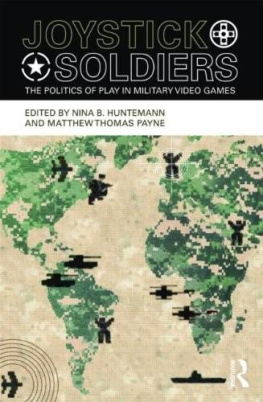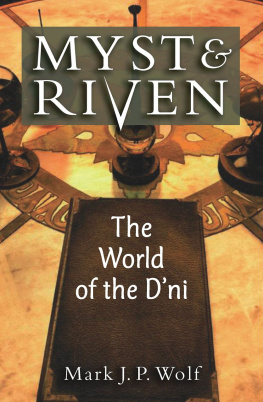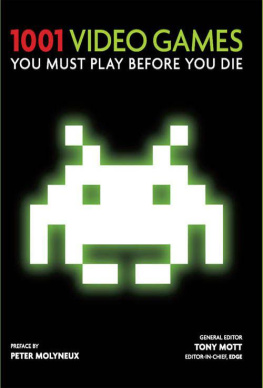The World of Scary Video Games
APPROACHES TO DIGITAL GAME STUDIES VOLUME 6
Series Review Board
Mia Consalvo, Concordia University in Montreal
James Paul Gee, Arizona State University
Helen Kennedy, University of Brighton
Frans Myr, University of Tampere
Toby Miller, University of California, Riverside
Torill Mortensen, IT University Copenhagen
Lisa Nakamura, University of Illinois
Gareth Schott, University of Waikato
Mark J. P. Wolf, Concordia University
Series Editors
Gerald Voorhees, University of Waterloo
Josh Call, Grand View University
Katie Whitlock, California State University, Chico
The World of Scary Video Games
A Study in Videoludic Horror
BERNARD PERRON

Contents
I would like to thank:
- La Elisabeth Perron, who let me spend sleepless nights playing scary video games throughout the years;
- my parents, as always;
- my colleagues and friends Dominic Arsenault, Simon Niedenthal, Guillaume Roux-Girard, and Carl Therrien for their comments on some of the chapters and their absolute support;
- Jean-Charles Ray for his great insights on the monstrous;
- Martin Picard and David Javet for their clarifications about the marketing of Resident Evil in Japan;
- the students who have followed my classes on horror video games and pushed me to better explain my thoughts;
- Simon Dor, Brian Greenspan, and Shanly Dixon who have helped me clarify some of my formulations and arguments;
- Martina Cooper, Odette Provost, and Serge Cardinal for their constant encouragements;
- Jessica Aldred who has proofread and commented on the manuscript with great care;
- Gerald Voorhees (without your insistence, I would not have written this), Josh Call, and Katie Whitlock, the editors of the Approaches to Digital Game Studies series, who have welcomed my contribution to their collection;
- Philippe Morin and Red Barrels for the image of the cover;
- Katie Gallof, Susan Krogulski, and Erin Duffy from Bloomsbury, who have looked after me during the whole publication process;
- the Social Sciences and Humanities Research Council of Canada (SSRCC), who funded my research project on scary games (200711);
- the external reviewers of the proposal and the manuscript for their great insights;
- all the YouTubers who have facilitated my life by allowing me to easily check and recheck details and compare possible events and helped me with the figures (since many of my old game sessions on VHS were unusable).
A few paragraphs of Chapters 5 and 6 are borrowed from Silent Hill: The Terror Engine (2012). Used with permission.
Parts of Chapter 7 were published in an earlier form as Effrayantes aventures dans le champ aveugle du jeu vido et du cinma dhorreur in Cinma et jeux vido , edited by Alexis Blanche (2017). Used with permission.
Parts of Chapter 10 were published in an earlier form as Le survival horror: un genre vidoludique idal pour une tude genre in Genre et jeux vido , edited by Fanny Lignon (2015). Used with permission.
Michel Chions figure in Chapter 8 is taken from Audio-Vision: Sound on Screen (1994), initially published in French by Armand Colin (1990). Used with permission.
The Traversal Mapping of Resident Evil is taken from Chris Pruetts website. Used with permission.
Thats strange, its getting darker.
HARRY MASON, IN AN ALLEYWAY AT THE BEGINNING OF SILENT HILL (1999)
To state that scary video gamesor games that have commonly been labeled survival horrorare the video game genre par excellence has become, for me, a sort of jingle used as a premise for many of my thoughts over the years I have been scrutinizing them.relation to its capacity to elicit complex human emotions (Perron and Schrter, 2016: 1), the genre has provoked very early on what Lovecraft ([1927] 1973: 12) has identified as the oldest and strongest emotion of mankind, namely fear. Not to mention that, as with film and literature, the horror genre has been very popular in the videoludic realm. Consequently, with great delight, the book you are about to read gives me the chance to write and rewrite ten couplets around the same cherished refrain. The song, youll understand, is more a death metal track than a new-age one.
From the outset, one finding emerges. As Mark Jancovich wrote to open Horror, the Film Reader at the beginning of the 2000s, The horror film has taken over from the western as the genre that is most written about by genre critics (2002: 1). This interest has not declined in the years since. Books on horror literature and cinema are still published. However, the situation is the opposite with the video game. There exists no concise book dealing with videoludic horror. This doesnt mean that the corpus has not been investigated. There are indeed numerous scholarly journal articles, book chapters, masters and PhD thesis written about horror video games from various perspectives. I have myself edited a collection of essays in 2009 entitled Horror Video Games: Essays on the Fusion of Fear and Play , with the first half of the volume exploring various generic issues, and the second one examining significant works and series. As enlightening as such a collection is, it doesnt allow for a focused line of attack. This is what The World of Scary Video Games: A Study in Videoludic Horror permits me to do. I aspire to communicate my humble thoughts about the genre and to pass on the knowledge I have of it. Plus, given that no one plays, or even more so works on, scary video games if they dont enjoy and love the genre, I wish to share all those pleasures of horror that aficionadas recognize and value.
In order to situate the research on the genre, Rick Worland pinpoints in The Horror Film: An Introduction four major questions asked by film scholars seeking to map and understand it: What is a horror film? What are the psychological functions of horror? How is this form evolved over time? And what are the social functions of horror? (2007: 67). For the video game, Ill answer in detail the first and third questions, and part of the second. Inasmuch as my approach remains formalist, my approach is heuristic, not hermeneutic. In accordance with David Bordwells distinctions, Im more concerned with referential and explicit meaning mak[ing] up what are usually considered literal meanings (1989: 8), than with symbolic or implicit ones trying to reveal what is hidden or speak[ing] indirectlythough Ill point to an exception below. I tend more toward the psychology and philosophy of emotions than psychoanalysis. And as Im not competent to do so, Im not tackling social implications.
To address the horror genre doesnt at first seem problematic. According to Brigid Cherry, Despite the difficulties with genre classification (and the problems with some aspects of genre theory itself), the horror film is one of the few generic types widely regardedthat is, by audiences, the industry and the popular mediaas a distinctive film genre, even if it is not easily definable (2009: 36). In fact, as Chapter 1 will establish, the notion of genre needs to be viewed as a discursive phenomenon aiming over time to encompass the temporary crystallization of a common cultural consensus. More than a well-defined form of popular fiction, horror films or video games are better understood as a world with different provinces and moving or disputed borders. Moreover, while the themes (such as invasion of everyday life by supernatural or evil forces, bodily mutations, madness, violence, torture, and death) and iconography (monsters, victims, blood, gory scenes, haunted houses, dark places, etc.) constitute clear points of contact with horror fiction and mostly, due to their audiovisual nature, with films, to simply say that one is playing a horror video game does not make it possible to determine what type of game is played. Genre theory needs to be adapted to deal with the ludic aspects of the experience.

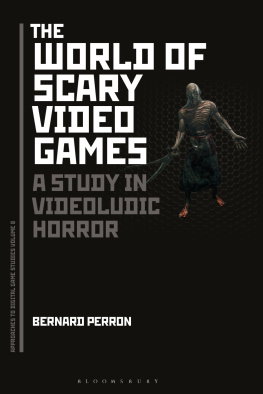
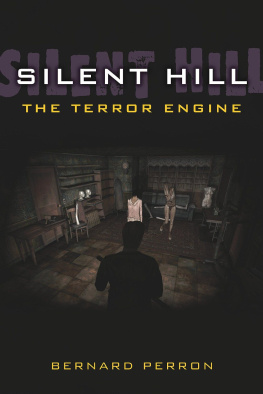
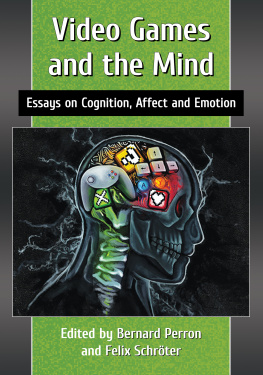
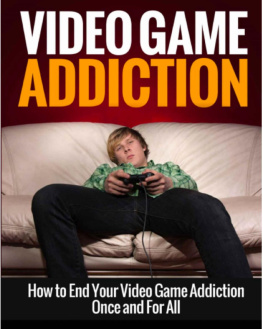

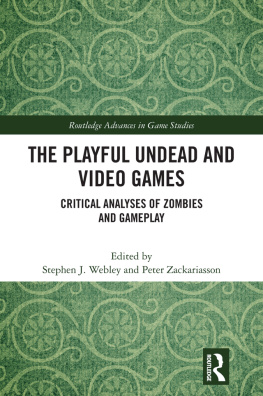
![Mark J. P. Wolf (editor) - Encyclopedia of Video Games: The Culture, Technology, and Art of Gaming [3 volumes]](/uploads/posts/book/279290/thumbs/mark-j-p-wolf-editor-encyclopedia-of-video.jpg)

